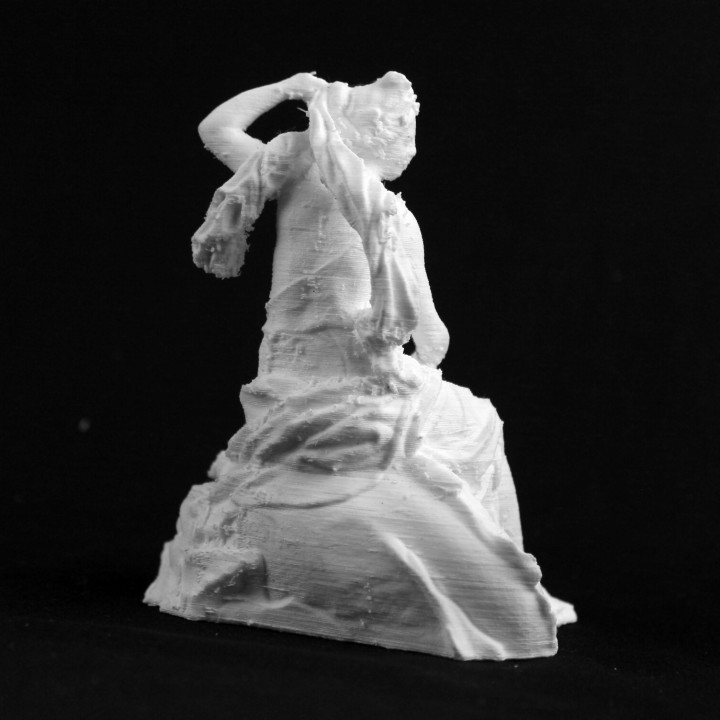
Amphitrite at The Louvre, Paris
myminifactory
In ancient Greek mythology, Amphitrite was a powerful sea-goddess who ruled the seas alongside her husband Poseidon. Under the influence of the Olympian pantheon, she became a devoted partner to Poseidon, and poets further elevated her status as a symbolic representation of the ocean's power. The goddess of saltwater Salacia, consort to Neptune in Roman mythology, was a minor figure compared to Amphitrite's grandeur. In contrast, Amphitrite was one of the four groups commissioned for the "river" in the Parc de Marly, a stunning work of art that stood alongside Neptune at the foot of the waterfall. The plaster model of Amphitrite and Neptune was created by Antoine Coysevox in 1699, but it wasn't until 1705 that he carved the marble versions. These statues were later seized during the Revolution and sent to Brest, where they decorated a fountain in 1801. They eventually found shelter in the Château de Kerjean from 1940 to 1953 before being brought to the Louvre in 1966. Amphitrite and Neptune were placed at the foot of the waterfall, creating a symbolic representation of France's territory. The waters of the rivers flowed towards the sea, which was ruled by the sea gods. As they stood at a lower level, Amphitrite and Neptune were made smaller to compensate for optical effects, allowing them to be viewed from all sides. The statues are companion pieces, designed to be seen from the front - that is, from the royal pavilion. Amphitrite's left arm, gracefully raised to catch her veil, balances the right arm of the god brandishing a trident; their faces are seen in profile facing one another. Their characters offer two aspects of the sea: unleashed or calm. Neptune represents power and movement, struggling to master a rebellious sea horse that he is pricking with his trident. His whole body is mobile, with legs braced, chest twisting, hair and beard flying. The swirling drapery matches his movement, while his noble head expresses divine authority. In contrast, Amphitrite is calm and smiling, sitting on a placid sea monster. A mantle is draped nobly over her legs in large folds. As in classical representations of marine triumphs, the wind gently stirs her veil behind her. Beside her, a joyous Triton plays with a horn of plenty full of the riches of the sea. This object is part of "Scan The World", a non-profit initiative introduced by MyMiniFactory that creates a digital archive of fully 3D printable sculptures, artworks and landmarks from across the globe for the public to access for free. Scan the World is an open source, community effort where anyone can contribute interesting items by emailing stw@myminifactory.com.
With this file you will be able to print Amphitrite at The Louvre, Paris with your 3D printer. Click on the button and save the file on your computer to work, edit or customize your design. You can also find more 3D designs for printers on Amphitrite at The Louvre, Paris.
